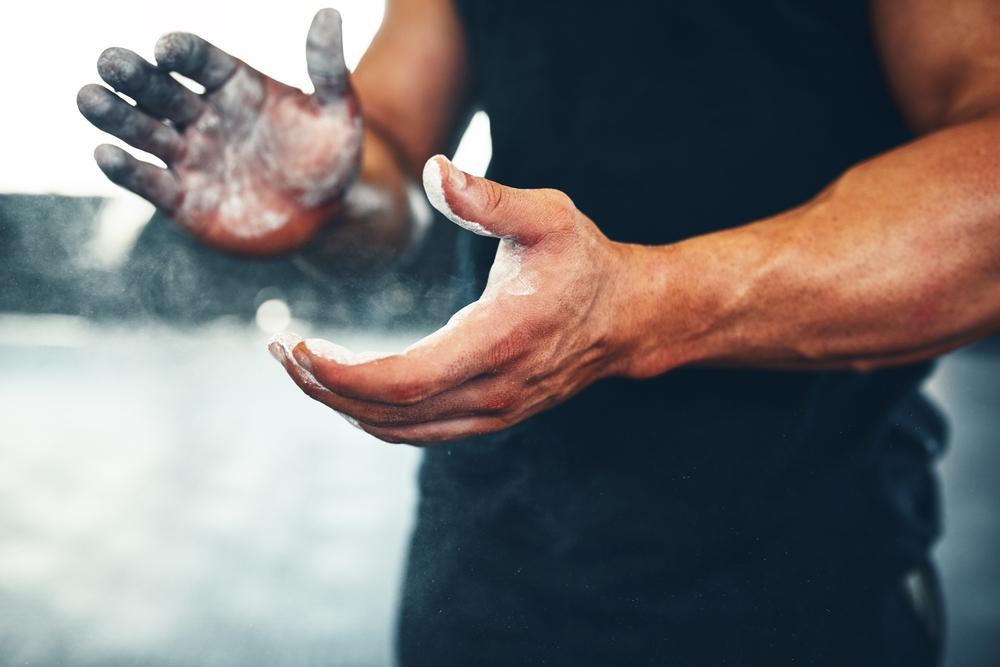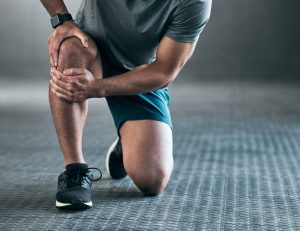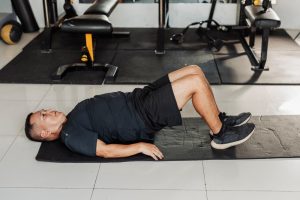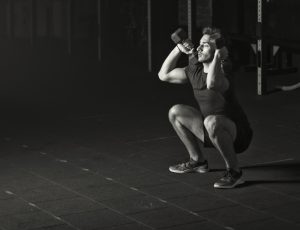Choosing between a pronated (overhand) and supinated (underhand) grip depends on your training goal—go with pronated for back and compound strength, and supinated for biceps and grip development.
Keep reading to see exactly how and when to use each for maximum workout gains.
Understanding the Basics: What Are Pronated and Supinated Grips?
Before you can make the right choice for your training, it helps to know exactly what these grips are and how they shape your lifts.
Though the difference comes down to the position of your hands, the impact on muscle engagement, strength, and overall workout efficiency is much more significant than it might seem.
What Is a Pronated Grip?
A pronated grip, also known as an overhand grip, means your palms face away from you when you grasp the bar.
It’s the standard grip for many foundational lifts like pull-ups, bent-over rows, barbell deadlifts, and lat pulldowns.
When you're using a pronated grip, the tension shifts primarily to the larger muscles of the back—like the lats, rhomboids, and traps—making it a go-to choice for developing upper-body pulling strength.
You’ll also see this grip used in pressing movements (such as the bench press or overhead press), where it promotes a neutral wrist position and more stable shoulder mechanics.
While those are technically different in motion, the principle is the same: the palms face away or down.
This grip tends to feel more natural during heavier lifts where spine alignment, posture, and pulling leverage are key.
However, it's not always the strongest position for your hands and forearms, which means it can limit your ability to hold on under fatigue, especially in higher-rep sets or grip-heavy movements.
What Is a Supinated Grip?
A supinated grip, often called an underhand grip, has your palms facing toward you.
This position is commonly seen in exercises like chin-ups, underhand barbell rows, reverse-grip curls, and supinated lat pulldowns.
Shifting the palm orientation in this way changes the muscular emphasis—bringing the biceps and forearms more directly into the movement.
Lifters tend to feel stronger in this grip for isolated or accessory pulling, especially in arm-dominant exercises.
That's because the biceps are placed in a mechanically advantageous position to generate force.
The tradeoff is that, while you may lift heavier or longer in this position for certain movements, you're also increasing stress on the elbows and biceps tendons—particularly if form breaks down or loads get too heavy too fast.
How Grip Orientation Influences Your Training
Although it might look like a minor change, switching your grip direction can dramatically affect how your body responds to a lift.
Grip orientation doesn’t just tweak your muscle recruitment—it can also shift how much weight you can handle, how quickly fatigue sets in, and how likely you are to strain certain joints or tendons.
- Strength Output: Supinated grip often feels stronger, particularly in pulling movements that involve the biceps or forearms, such as curls or chin-ups. You might lift more or perform additional reps in this setup, but it's not always the best choice for compound back training.
- Fatigue Management: Pronated grip may fatigue your grip faster in higher-volume work, especially if you're pulling heavy without straps. That said, it puts less strain on the smaller elbow flexors, allowing you to focus on larger muscles without overloading your arms.
- Muscle Emphasis: The difference in hand position shifts the muscular workload. Pronated emphasizes the back and rear delts, while supinated puts more focus on the arms and forearms.
Both grips serve a purpose. Neither is inherently better—just better suited to specific goals.
Understanding when to use each one is what allows you to train smarter, not just harder.
Grip Strength Differences: How Hand Position Affects Your Lifts
Grip strength isn’t just about hand size or forearm endurance—it’s heavily influenced by how you position your palms.
Whether you're pulling a barbell or hanging from a pull-up bar, the orientation of your grip can either support heavier loads or become the limiting factor in your performance.
Why Supinated Grips Feel Stronger in the Hands
When your palms face toward you in a supinated grip, your wrists and forearms align in a way that mechanically supports stronger gripping force.
Studies have consistently shown that grip strength is highest in this palm-up position, followed by neutral (palms facing in), with pronated (overhand) grip ranking lowest in terms of pure grip output.
What this means practically is that in exercises like chin-ups, reverse-grip barbell rows, or even curls, you're likely to feel more stable and capable of pulling heavier weights.
The muscles in your forearms and biceps are more actively involved and in a stronger position to contribute, helping you maintain control through the entire movement.
This stronger grip doesn’t just improve pulling mechanics—it also gives you more confidence when holding weights at the top of a movement or during longer time-under-tension sets.
Why Pronated Grips May Limit Your Grip Endurance
In a pronated grip, your palms face away from you, and that slight change in orientation can reduce how firmly you can hold the bar.
Your wrists are in a less mechanically favorable position, and your forearm muscles—especially the finger flexors—have to work harder to maintain grip tension.
Over time, especially during longer sets or when fatigue kicks in, this can make it harder to hang onto the bar or barbell, limiting your total workload.
This becomes a noticeable issue during deadlifts, pull-ups, or bent-over rows, where the bar can slip out or your form may break down because your hands give out before your back does.
Lifters often turn to lifting straps or alternate grips (like mixed grip deadlifts) to offset this weakness, especially in high-weight, low-rep work.
The Role of Grip Type in Fatigue and Power Output
Interestingly, while supinated grips win in terms of raw grip strength, pronated grips have been shown to generate higher propulsion force in explosive pushing-based efforts, like Wingate-style upper-body cycling tests.
This is less about grip endurance and more about total body force generation, especially from the triceps and posterior chain.
So while your grip may fatigue sooner in a pronated position, your larger muscle groups may still produce more power overall.
That said, fatigue still sets in faster during grip-intensive pulling with a pronated grip.
Because your grip tires quicker, you may be forced to end sets earlier than you would with a supinated or neutral grip—particularly if you're not using straps.
How to Use This in Your Training
If grip strength is the limiting factor in your lifts, consider programming supinated variations for volume-based work or late in your session, when fatigue is higher.
For your heavy compound lifts, where stability and spinal alignment take priority, a pronated grip still makes sense—even if your grip strength taps out sooner.
The key takeaway here is to match the grip to the goal.
Supinated for grip endurance and stability, pronated for back-driven compound strength—even if it means managing grip fatigue with straps or strategic programming.
Targeted Muscle Activation: What Each Grip Trains Best
The way you position your hands during a lift doesn’t just affect your grip—it shifts the workload across different muscle groups.
Knowing which grip hits which muscles helps you train with more intent and match the right movement to your goals, whether that’s building a bigger back, stronger arms, or more balanced posture.
What the Pronated Grip Emphasizes
When your palms face away in a pronated grip, the movement tends to favor the larger pulling muscles of the upper body.
This grip places a clear emphasis on the latissimus dorsi, the broad muscles running down the sides of your back.
It also strongly recruits the rhomboids and trapezius, both crucial for scapular retraction and overall back thickness.
What’s sometimes overlooked is that a pronated grip also brings the posterior deltoids and triceps into the equation.
These muscles don’t dominate the movement but provide supportive stability, especially during compound lifts like bent-over rows or pull-ups.
That support plays a direct role in posture, shoulder control, and functional strength—all key in moves that carry over to deadlifts and pressing.
Because the biceps are in a less favorable position, they’re less dominant during pronated pulling.
This allows your back to take center stage. It’s part of why pronated pull-ups are often tougher: you’re relying less on arm strength and more on pure back engagement.
What the Supinated Grip Shifts Toward
Flipping your palms to face you in a supinated grip changes the picture entirely.
This grip recruits the biceps brachii far more directly, making it a favorite in curls, chin-ups, and underhand barbell rows.
Alongside the biceps, the brachialis and forearm flexors become more active, which contributes to both size and strength in the arms.
That said, the back is still involved.
Supinated rows and pulldowns continue to train the lats and mid-back—but with the arm muscles doing more of the heavy lifting, especially during the first half of the pull.
For bodyweight movements like chin-ups, the result is usually more reps and a deeper burn in the arms.
However, it’s worth noting that EMG studies on pulldown variations show mixed results when comparing biceps activation between pronated and supinated grips.
In some cases, the difference is minimal during controlled lat pulldowns.
Where the gap widens clearly is during chin-ups—a supinated grip consistently leads to significantly greater biceps activation, likely due to the vertical pulling angle and full-body engagement.
Putting It into Practice
If your goal is to build a thicker, stronger back, start with pronated grip exercises.
These allow you to shift the focus to the largest upper-body pulling muscles, and because the biceps aren't dominating the movement, you can avoid overtraining your arms early in the session.
Later in your workout—or on arm-specific days—bring in the supinated grip to focus more directly on the biceps and forearms.
It’s ideal for accessory lifts where you can afford to reduce back involvement and zero in on arm development.
As you plan your split, think of it like this: pronated grip builds backs, supinated grip builds arms.
Rotate them based on what you're trying to improve, and use each grip where it does its best work.
Choosing the Right Grip for Strength, Size, and Performance Goals
To get the most out of your training, you need more than good form—you need the right strategy.
That includes knowing when to use each grip based on what you’re trying to build: back strength, bigger arms, better grip, or overall performance.
The grip you choose should match your goals, not just the exercise.
When to Use a Pronated Grip
If your focus is on building upper-body strength, especially through heavy compound lifts, the pronated grip is your strongest ally.
It places the demand squarely on your back muscles—especially the lats and rhomboids—and lets you safely load movements like bent-over rows, barbell deadlifts, and pull-ups.
This grip keeps your wrists and shoulders in a more neutral, stable alignment during high-load training, which reduces injury risk while maximizing recruitment of the large posterior chain muscles.
You’ll also get better carryover to compound pressing exercises and overall functional strength.
Because the grip relies less on the biceps, it keeps the movement more balanced and transferable across different lifts.
That said, if used exclusively, the pronated grip may under-stimulate the arms, especially in pulling-focused isolation work.
When the Supinated Grip Takes the Lead
If your training goals lean more toward arm hypertrophy, grip endurance, or accessory volume, a supinated grip is a better fit.
Since this hand position naturally brings the biceps and forearms into play, it’s ideal for movements that emphasize arm growth—think chin-ups, reverse curls, and underhand barbell rows.
It’s also a smart choice during high-rep sets or toward the end of your workout, when your grip is taxed but you still want to push volume.
The added involvement from the biceps can help you complete more reps or maintain control under fatigue.
Just keep in mind that there’s a trade-off: supinated deadlifts or other heavy underhand pulls can place a lot of strain on the biceps tendon, particularly if your technique breaks down or fatigue sets in.
Understanding the Trade-Offs
Both grips come with strengths and drawbacks, and being aware of those helps you program more intelligently.
The pronated grip, while great for big lifts and back development, may not be ideal if you're aiming to hit the arms hard.
On the flip side, the supinated grip can be a powerful tool for arm development but may become a liability in heavy pulling if it compromises safety or joint integrity.
This is where programming becomes critical.
Use the pronated grip for heavy, multi-joint lifts where structure, posture, and full-body tension are priorities.
Save the supinated grip for controlled, focused work where arm and grip development are the main goals.
Smart lifters rotate their grips with purpose.
Think of it as matching the tool to the job—not every grip is right for every movement, but every grip has a place in a well-rounded training plan.
Practical Grip Programming: How to Structure Grip Rotation in Your Workouts
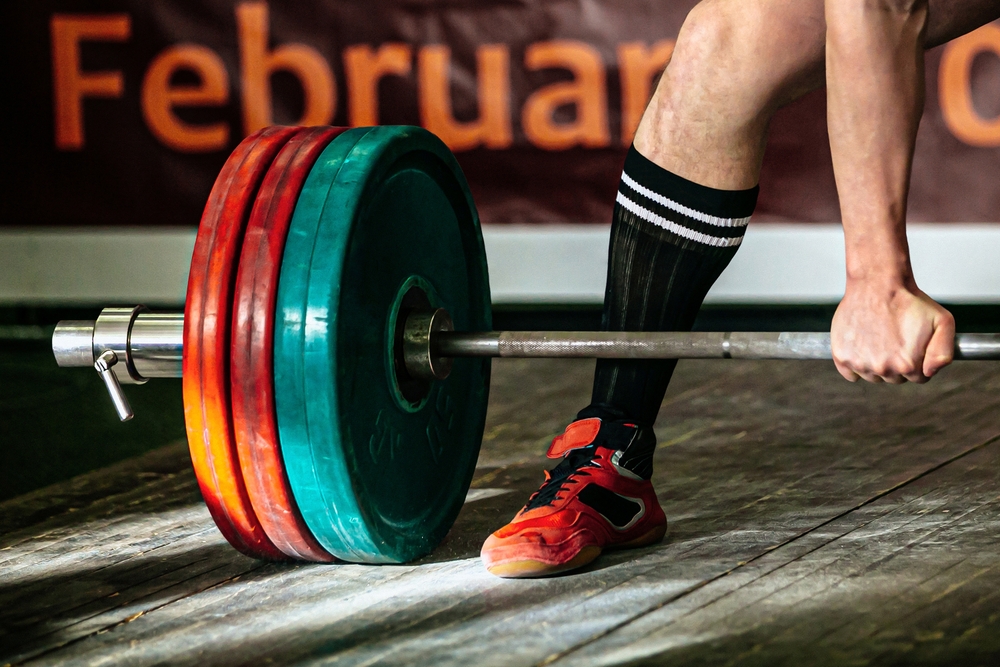
Knowing when to use each grip is one thing—putting it into a smart, effective routine is where real progress happens.
Grip programming isn’t just about variety; it’s about intentional structure that balances muscle activation, joint health, and long-term performance.
Starting Strong: Use Pronated Grips Early in the Session
Begin your workout with pronated grip exercises, especially when you're doing heavy compound movements like pull-ups, bent-over rows, barbell deadlifts, or snatches.
This grip sets up safer spinal alignment, maximizes back muscle recruitment, and keeps the load where it should be—on the lats and upper posterior chain.
Because you're freshest at the start of your workout, it's the best time to perform movements that require high levels of control, stability, and power output.
A pronated grip also avoids early overuse of the biceps, which can otherwise tire out quickly and limit performance in your bigger lifts.
Shifting to Supinated Grips for Arm and Grip Volume
As your session progresses, shift into supinated grip exercises to focus more on arm development and grip endurance.
At this point, you’ve already hit the back and posterior muscles hard. Now it’s time to bring the biceps, brachialis, and forearms into the spotlight.
Chin-ups, reverse curls, and underhand rows are all ideal for this mid-to-late phase of training.
The supinated grip not only supports additional volume work, but also allows you to squeeze more out of your grip before total fatigue sets in.
The mechanical advantage of this grip helps offset some of the accumulated fatigue from earlier in the workout.
Programming Neutral Grips for Balance and Joint Health
Don’t overlook neutral grips, where your palms face each other.
Movements like hammer curls, trap-bar deadlifts, and neutral-grip pull-ups are excellent for reducing wrist strain and balancing muscle activation between the biceps and brachialis.
These lifts also tend to feel more natural on the shoulders and elbows, making them a solid option for high-volume or recovery-focused sessions.
Rotating neutral grip variations into your program throughout the week—or even within a single session—helps maintain overall joint integrity and minimizes repetitive strain.
This becomes increasingly important as training volume increases or as you begin working with heavier loads over time.
Rotating Grips Across Training Blocks
Beyond single workouts, think about grip rotation in terms of training blocks or weeks.
One block might prioritize pronated grip variations to build pulling power and back thickness, while another focuses on supinated or neutral movements to develop arms and address grip weaknesses.
This rotation keeps your progress steady while lowering the risk of overuse injuries.
It also ensures balanced muscular development, reducing the chance that one area becomes dominant while another lags behind.
As fitness coach Michael Geraghty puts it:
“The supinated grip builds arms. The pronated grip builds backs. The neutral grip builds balance. Use them wisely. Rotate them often.”
A grip rotation strategy doesn’t need to be complicated—but it should be intentional.
If you plan it right, you won’t just improve your lifts—you’ll stay healthier, stronger, and more structurally balanced across your entire training cycle.
Key Takeaways and Action Steps for Smarter Training
Grips aren’t just about preference—they’re tools.
The way you use them can shape your progress, prevent setbacks, and keep your programming aligned with your goals.
Now that you’ve seen how each grip performs, here’s how to apply that knowledge in a way that’s simple, strategic, and effective.
What the Pronated Grip Does Best
If your focus is on pulling strength, posture, and full-body performance, the pronated grip belongs at the center of your compound lifts.
It emphasizes the lats and upper back while also supporting functional movements that rely on coordinated power, like rows, deadlifts, and even Olympic lifts.
Because this grip minimizes biceps involvement, it’s ideal when your goal is to train your back without exhausting your arms too early.
It also supports better spinal posture, which makes it especially valuable in lifts that demand full-body tension and stability.
When Supinated Grips Make More Sense
For targeted arm and forearm growth, as well as improving grip strength during longer sets, the supinated grip is a go-to.
It brings the biceps into a stronger pulling position, which helps during hypertrophy-focused sessions and high-rep accessory work.
This makes it great for chin-ups, underhand rows, and curls—particularly when placed after your heavier lifts.
Because this grip naturally feels stronger for your hands, it also helps squeeze out a few extra reps when grip fatigue might otherwise cut a set short.
Just remember that this extra load on the biceps can become a liability under heavy loads, especially if your form isn’t solid.
Why Grip Rotation Isn’t Optional
Training with only one grip over time can lead to muscular imbalances, overuse injuries, and slower progress.
Regularly rotating between pronated, supinated, and neutral grips distributes the mechanical stress more evenly across joints and muscle groups.
It also allows you to develop a more balanced physique, with fewer blind spots in strength or coordination.
For example, pairing pronated compound pulls at the start of a session with supinated accessories later on helps you get both strength and hypertrophy benefits without overtaxing any one system.
Neutral grip movements—like hammer curls or trap-bar pulls—offer even more balance, especially if you’ve had issues with wrist, elbow, or shoulder strain in the past.
Watch Out for the Common Pitfalls
Every grip has its limitations.
The supinated grip, while strong, increases the risk of biceps strain under heavy or ballistic loads—especially in movements like deadlifts or heavy rows.
On the other hand, pronated grip can become a limiting factor during longer sets due to weaker grip endurance, making straps or grip aids more necessary for high-volume work.
Conclusion
The way you grip the bar shapes how your body responds to every pull, row, or curl.
Use pronated grips for back strength and structural power, and supinated grips for arm growth and grip endurance.
Rotate strategically, and your training will stay balanced, effective, and built for long-term progress.

